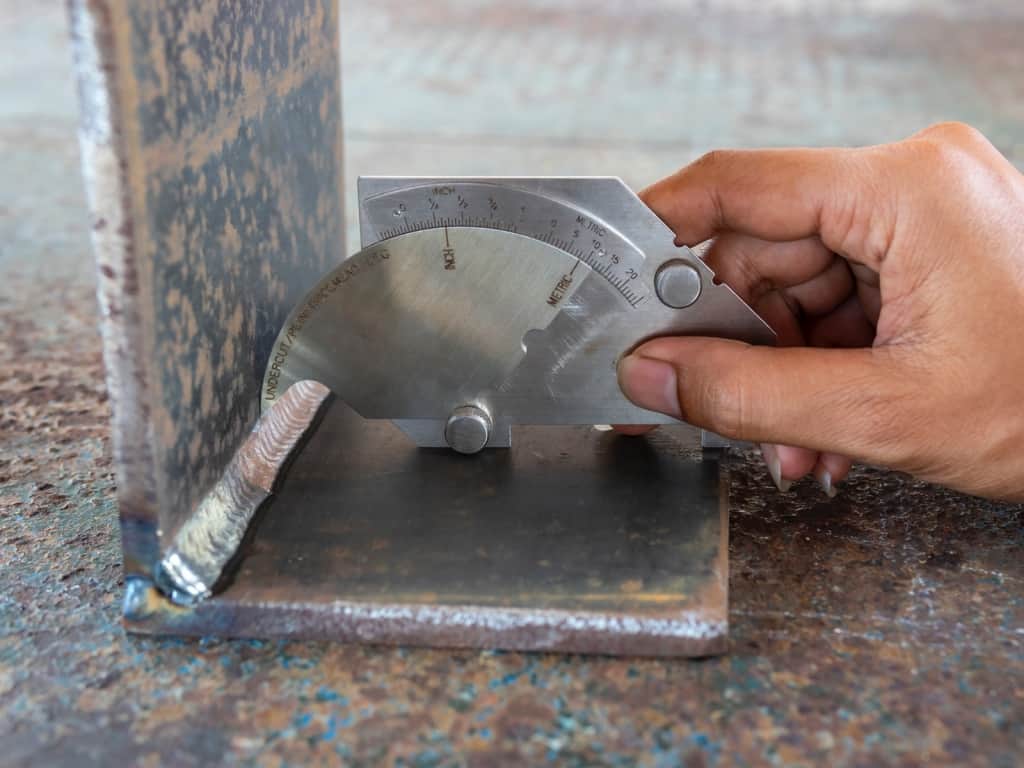Professional Strategies for Preventing Weld Undercut Effectively
Professional Strategies for Preventing Weld Undercut Effectively
Blog Article
Comprehending the Causes and Solutions for Undercut Welding in Steel Manufacture Procedures
In the world of metal construction procedures, the event of undercut welding presents a significant difficulty that requires a comprehensive understanding of its causes and feasible services. The intricate interaction of different aspects during welding procedures can cause this undesirable sensation, impacting the architectural integrity and overall quality of the bonded joints - Preventing weld undercut. By dissecting the root triggers of undercut welding and checking out effective restorative actions, makers can elevate the criterion of their handiwork and make sure the manufacturing of flawless metal components
Typical Reasons For Undercut Welding
Frequently neglected in metal fabrication, undercut welding happens as a result of various elements that require careful attention and knowledge to be successfully mitigated. One common reason for undercut welding is excessive warm input. When the warm input is too high, it can result in the melting and succeeding disintegration of the base material along the sides of the weld joint, producing a groove or undercut. Additionally, incorrect welding techniques, such as utilizing the wrong welding angle or take a trip rate, can likewise add to undercut development. Inadequate securing gas coverage is one more crucial aspect that can result in undercutting. Not enough gas coverage falls short to protect the weld pool properly, bring about oxidation and undercut defects. Additionally, the choice of welding specifications, such as voltage, existing, and wire feed speed, plays a considerable duty in the occurrence of undercut welding. Comprehending these usual reasons is essential for carrying out preventative measures and making sure high-grade welds in metal fabrication processes.
Influence of Incorrect Welding Parameters
Unreliable welding criteria can considerably jeopardize the honesty and quality of welded joints in metal construction procedures. The impact of incorrect welding specifications materializes in numerous means, leading to structural weaknesses and problems in the welded elements. Thorough attention to welding criteria is paramount to guarantee the manufacturing of top quality welds with the preferred mechanical residential properties and architectural honesty.
Result of Improper Lantern Angle
Incorrect torch angle in welding operations can significantly influence the top quality and stability of the final weld joints in metal fabrication procedures. Damaging is a common welding defect where a groove creates along the weld toe, deteriorating the joint and jeopardizing its structural honesty.
A torch angle that is too steep can bring about not enough infiltration, incomplete fusion, and increased spatter. On the various other hand, a lantern angle that is as well shallow can result in too much infiltration, burn-through, and distortion of the base material. Preventing weld undercut. Proper lantern angle is vital for making sure constant weld quality, toughness, and look
To avoid damaging and other issues created by inappropriate torch angles, welders must be educated to maintain the correct lantern angle throughout the welding process. Regular surveillance and modification of torch angles throughout welding can assist accomplish sound welds with marginal flaws.
Role of Inadequate Welding Strategies
One more facet of poor welding strategies is inappropriate weld prep work. Inadequate cleaning of the base steels, inaccurate joint design, or insufficient edge preparation can all contribute to damage welding. Insufficient protecting gas coverage or making use of the incorrect type of gas can result Read Full Report in incomplete blend and the formation of undercut problems.
To address the duty of insufficient welding techniques in steel construction processes, more information it is crucial to supply extensive training for welders. Proper education and learning on welding specifications, joint preparation, and securing gas selection can aid stop undercut welding and guarantee high-quality welds in steel fabrication tasks.
Efficient Solutions for Undercut Welding
Addressing undercut welding in steel fabrication needs implementing reliable services to boost weld high quality and architectural integrity. Among the primary remedies to fight undercut is to readjust welding parameters such as voltage, existing, and travel speed to make certain appropriate warmth input and fusion. By fine-tuning these setups, welders can protect against extreme melting of the base steel and filler product, decreasing the chance of undercut formation.
Furthermore, proper joint preparation is vital in preventing undercut. Making sure tidy base metal surfaces without contaminants and utilizing the proper bevel angle can aid promote much better weld infiltration and lower the risk of undercut - Preventing weld undercut. Using ideal welding pop over here techniques, such as oscillating the lantern or weaving, can also aid in distributing warm equally and loading the weld joint sufficiently, lessening the opportunity of undercut issues
Furthermore, selecting the appropriate welding consumables, consisting of electrodes and filler steels, is crucial in mitigating undercut. Using materials with suitable chemical structures and mechanical properties can add to achieving sound welds with minimal undercut. Regular inspection and quality control steps should also be implemented to spot and deal with undercut issues quickly, guaranteeing the overall integrity of fabricated steel parts.

Final Thought
In final thought, comprehending the causes and solutions for undercut welding in metal manufacture procedures is vital for accomplishing premium welds. By attending to typical causes such as wrong welding criteria, incorrect torch angle, and inadequate welding strategies, welders can stop undercutting and guarantee strong, sturdy welds. It is necessary to focus on these elements and implement reliable options to improve the total welding process and end product high quality.

Report this page